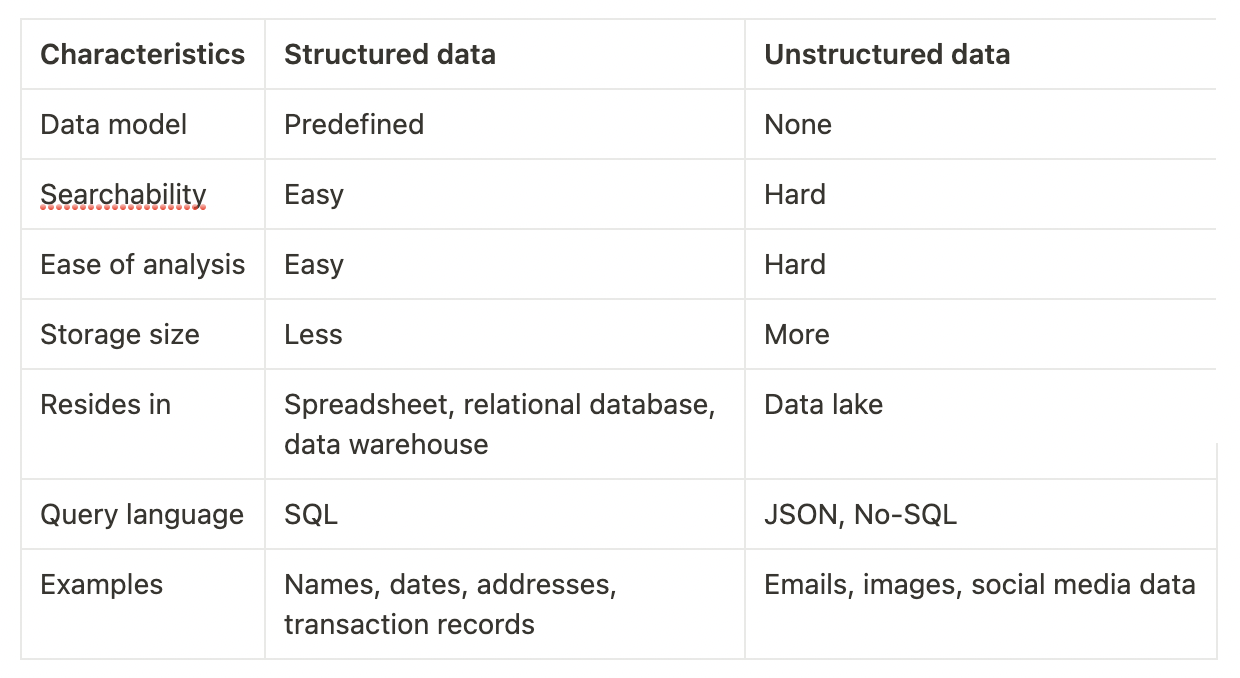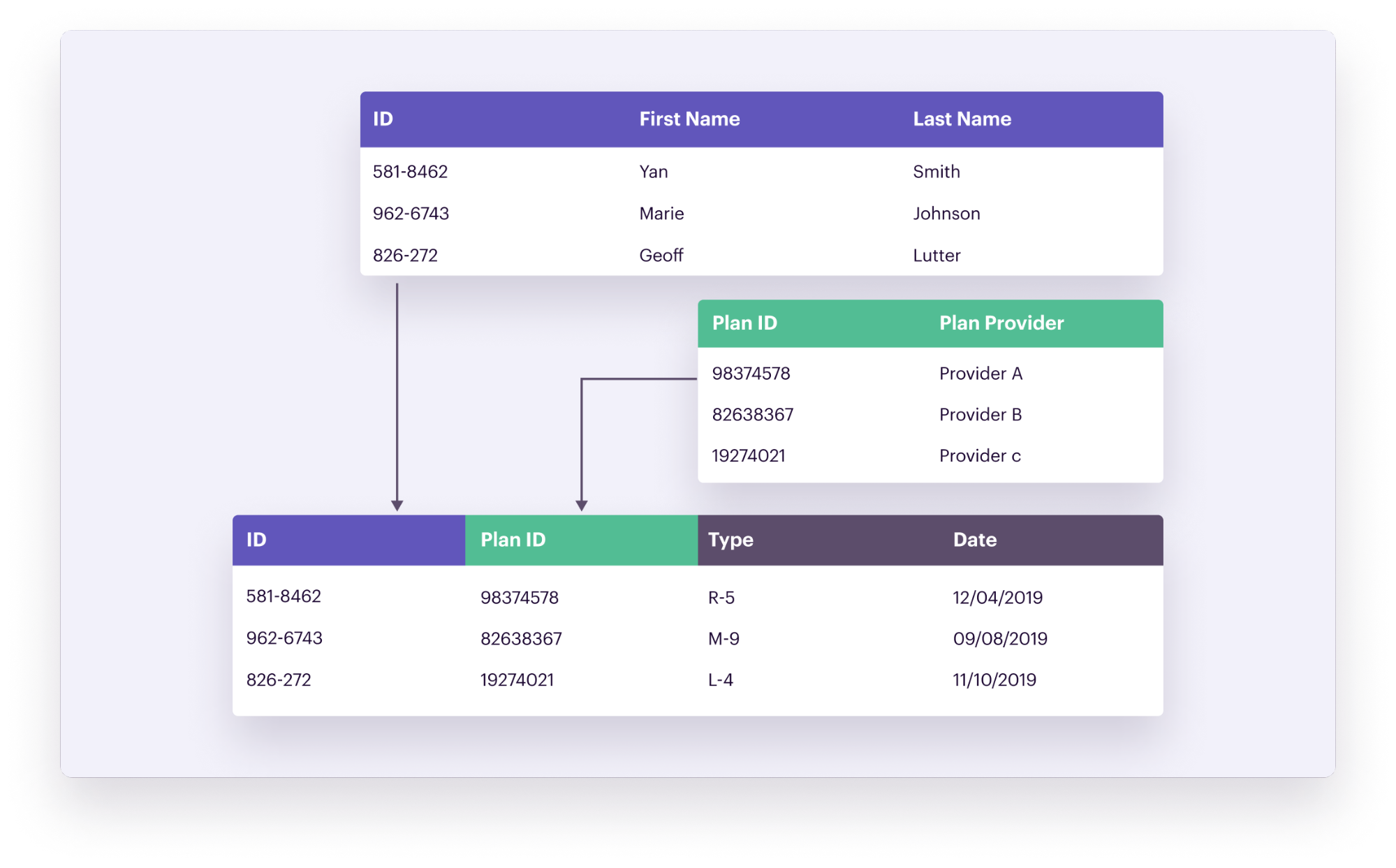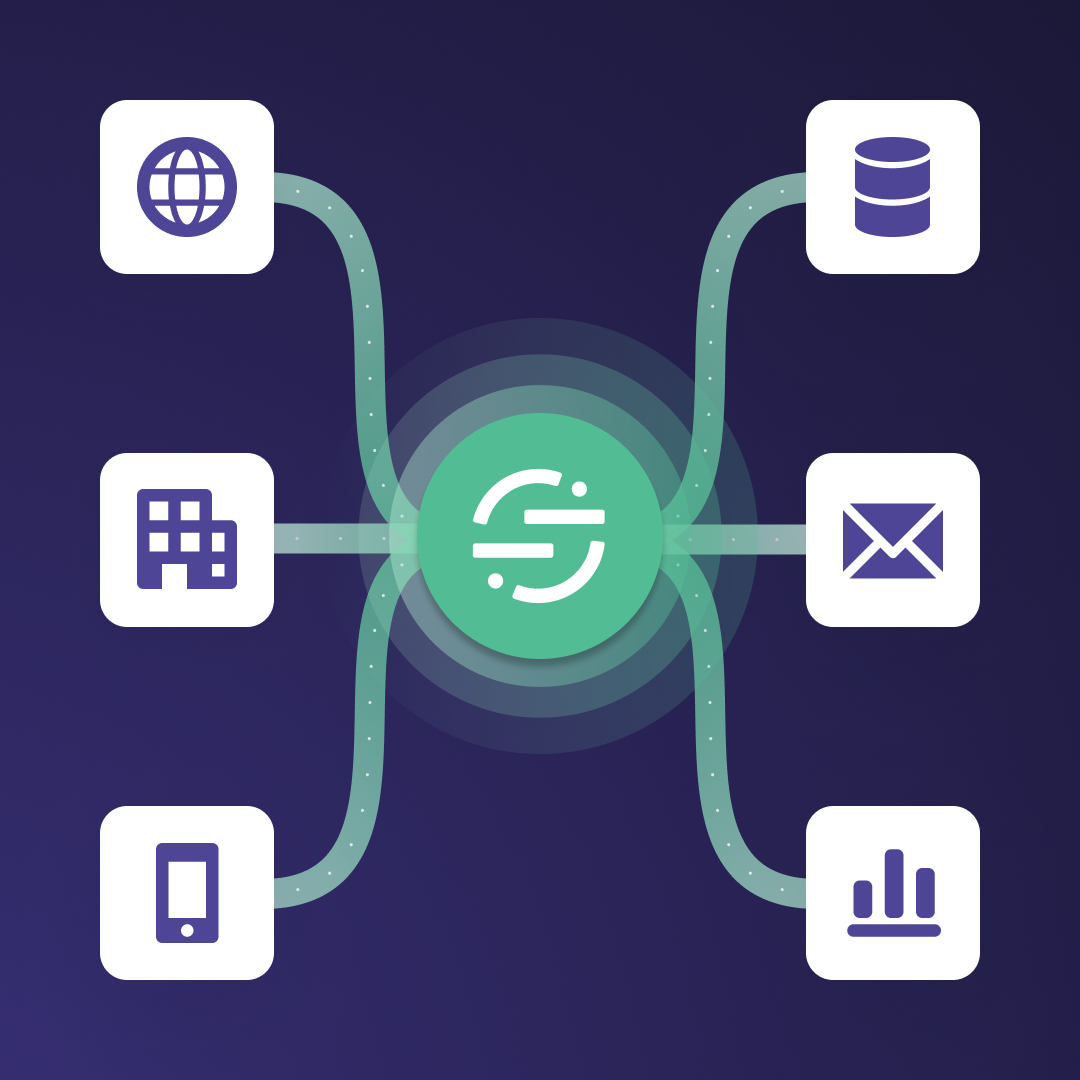Structured vs. Unstructured Data: What You Need to Know
The differences between structured, unstructured, and semi-structured data.
The differences between structured, unstructured, and semi-structured data.
Let’s say you’re creating a survey. As you go through, you start debating which questions should be write-ins and which should be multiple choice. On the one hand, having participants choose from a pre-specified list makes it easier to analyze the results. On the other, having people write in their own answers provides more nuance – but makes the data harder to organize.
This dilemma speaks to one of the essential differences between structured and unstructured data. Structured data is predefined and highly organized, whereas unstructured data doesn’t automatically fit into a neat definition. Let’s dive deeper into these differences below.
As mentioned above, structured data is predefined. Think of it as data that can be neatly organized into a spreadsheet, like a date, name, address, barcode, telephone number and so on. Unstructured data, by contrast, is raw information captured in its original form (like text files, photos, audio, etc).
Semi-structured data is a bit of both. A good example of this is with HTML, since tags help categorize different sections as a title, paragraph, and so on, but the actual text would be unstructured.

We explore these types of data in more detail below.
Structured data is information stored in a predefined field, like the cell of a table, spreadsheet, or relational database (pictured below).

People and algorithms can easily input, search, and change structured data. However, it does need upfront work: Someone must create a data model to determine which types of data go where.
It’s like the survey example from our introduction: a multiple-choice questionnaire takes more effort to set up since you need to have the answers ready in advance. But, once that's done, it's easier for the respondent to fill out.
Names
Dates
Email addresses
GPS location coordinates
Sales and other financial transactions
Online form submissions
Unstructured data is raw information stored in its original form, usually in a data lake or non-relational (NoSQL) database. Because unstructured data doesn't go into predefined categories, analyzing takes more effort.
Despite this, the use of unstructured data has become much more popular in recent years: it makes up 80% to 90% of all data today.
Text documents, including chats, PDFs, and presentations
Social media data, like posts, tweets, and comments
Media like audio, images, and video
Sensor data from Internet of Things (IoT) devices
Semi-structured data is a piece of unstructured data that comes with tags or markers to identify what the information is about (the so-called metadata). An email, for example, is actually semi-structured. While the email text would be unstructured data, it can be organized as being sent, received, or even filtered as spam (as a few examples).
More and more data continues to fall into the semi-structured category, as everything from pictures to blog posts now often includes metadata (often for the benefit of SEO).
To return to our survey example once more, a multiple-choice question that offers an "other" option with the ability to write in an answer would be considered semi-structured data.
Digital photographs that include metadata like alt text and a date
Emails when they include both content and information like subject, receiver, and sending date
HTML and XML webpages
Zip files
Data is a goldmine of insights about your customers. And with advances in AI, big data, and tools like Twilio Segment, you can uncover information that would have been inaccessible just a few years ago.
Here are some benefits of mining your structured and semi-structured data for insights:
Discover customer’s preferences and needs by analyzing browsing history, purchase data, or even email exchanges between customer support.
Improve targeting and personalization.
Identify problems and opportunities in your UX via usage data.
Automate compliance and security assessments on incoming and outgoing data.
Save time on data processing and gathering business intelligence.
While working with structured and semi-structured data is much easier than before, three issues are still widespread:
Data is often stored across many tools and platforms: This fragmented data collection leads to a lack of visibility between teams, and a limited understanding of the user experience.
Data collection isn’t standardized: Without standardized data collection, the risk of duplicate entries for the same event skyrockets, which can skew data analysis.
Data quality & integrity issues can easily arise: When everyone collects data in whichever tool and format they please, painful mistakes are unavoidable. For example, Marketing might personalize a campaign based on outdated information, or Finance sends an invoice to a customer that’s already churned.
Segment's CDP can capture data from any touchpoint, including your website, app, and offline sales channels. Our platform cleans and standardizes your information and can apply compliance checks automatically as data comes in.
Segment also comes with built-in identity resolution and merges each customer's activity into a single profile using Personas. With your customer data centrally stored in this way, you can then use Twilio Segment to send this information to hundreds of destinations like third-party apps for analytics, marketing campaigns, and product personalization.
Twilio Segment makes it easy for non-technical users to connect new tools to customer data, so marketing and other teams can switch between different solutions without needing engineers.

It’s free to connect your data sources and destinations to the Segment CDP. Use one API to collect analytics data across any platform.
Structured data is a predefined value, like a name, date, email address, and so on. Unstructured data doesn’t fit into these predefined definitions, like an audio clip, photo, or text documents.
Structured data can be used for a multitude of reasons, ranging from customer communication to research, or even for compliance. For example, having a customer address and billing information on file is necessary to send invoices or payments. Or, a customer may want to save their address with a retailer to avoid filling out their shipping information with each order.
Unstructured data can also be used in a myriad of ways, and can provide great insight into customers. Think of customer reviews left on websites or in emails – this type of written feedback can give a company a much more nuanced understanding of the user experience than a numerical rating can.
There are many tools to process structured data. A spreadsheet is the most basic method for such analysis. A more advanced approach is to use a query language like [SQL](https://segment.com/academy/intro/when-to-use-sql-for-analysis/) and a [data warehouse](https://segment.com/blog/best-data-warehouse/) to store and process your structured data. Then you synthesize all your information with a CDP like Twilio Segment, and send it to an analytics or business intelligence tool for further analysis.